Uncategorized
Let’s Build a Home for a Young Family
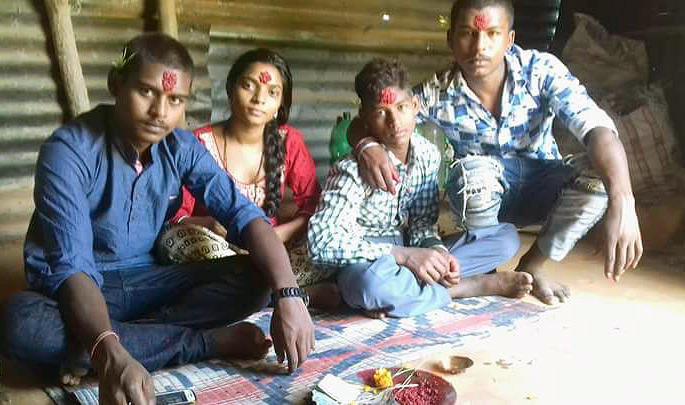
Deepak Pariyar and his wife Anita, like many others, have lost their home to the earthquakes in April, 2015. Since then, they have been living in a corrugated metal hut together with their six month-old baby girl and two teenage brothers.
Their hut consists of just two small rooms and two beds which they all share. They are constantly exposed to extreme weather conditions, dust, humidity, mosquitoes and rodents, making it very unsafe especially for their baby girl, Anju.
Another worrying factor is the upcoming monsoon season. The past monsoons have eroded the knoll of the land where the shed lays and the family doesn’t think that the hut will be able survive another monsoon.
Unfortunately, the young family doesn’t have much support. Deepak and his brothers have lost their parents and the family isn’t eligible for government funding. Nonetheless, the family is trying their best to change their situation. They have bought some material to start building the house but without any help they will not be able to finish the house before the next monsoon season.
So we want to help!
We believe that no family should live in these conditions and surely you think so too. To give you a brief glimpse of what your donation to Dada-Home.Org can buy:
-EUR 0,15 for a clay brick.
-EUR 15 for a sack of cement.
-EUR 150 for a truckload of sand.
The type of house we will build will depend on the amount of donations we will receive as well as on the specific needs of the respective young family. Generally, we wish to raise at least an amount of EUR 4500, as that will usually enable us to build a simple house with a strong foundation that can be extended later and provides a roof, a toilet and the necessary living space.
We will donate 25% of every order we receive this current month to the project.
We understand that not everyone is in a position to donate money, however, you can still help these young families by simply spreading the word.
So tell your friends, family and colleagues about Dada Home Org and our fundraisers.
You can share our Facebook page, recommend our website via email or tweet about us.
Thank you.
Best Wishes Of A Peaceful 2018
We all wish to our dear followers and patient customers a blissful new year.
Namaste.
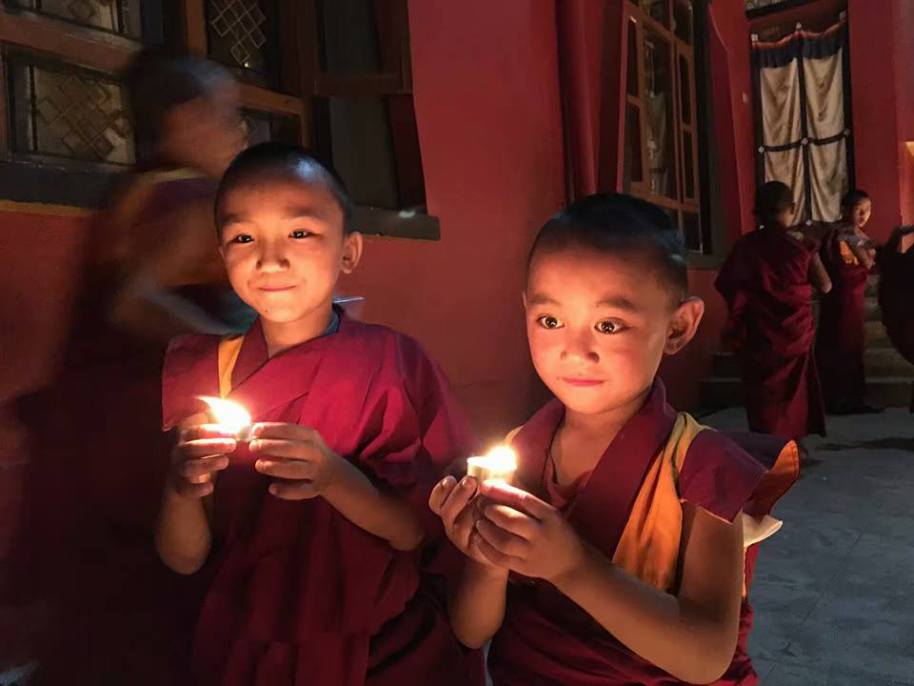
Supporting Micro Businesses in Nepal
Being in a small village like Changunarayan where traditional handcrafts are nurtured made me draw parallels with New Zealand and our own traditional crafts such as Maori wood carving, weaving and painting. New Zealand also has a very strong artisan culture; supporting potters, craftsmen jewellers, painters, clothing designers, sculptures and numerous handcrafts and locally made items. One of the worst things about opening the gates to free trade with China has meant the majority of New Zealand designed items are made off-shore. I am a keen advocate for supporting New Zealand made products. What a domestic market does for the country is create an investment in its people. When we source cheap, easy to reproduce products from China or India, we slowly but surely fritter away the skills needed in a labour force to keep the economy healthy. Nepal has suffered immensely from large earthquakes, so this small country needs it’s cottage industry’s to be supported through tourism. It needs to be able to re-invest in it’s people and find value in the local traditional artisans. I had five items of clothing made last week in Sankhu – the town where we have been doing earthquake volunteer work building shelters. In Nepal, women who wear the traditional clothing, have these items made from scratch. A seamstress will measure you up and make to order. Fabric is cheap and the variety is outstanding. Consequently there is a multitude of seamstresses (and tailors for the men) to be found, along with fabric shops. My five items included three tops in traditional Nepali style and two pairs of pants also in the same style. For fabric and construction the total cost was 37,000 Nepali Rupee – approximately $50 New Zealand dollars.Note that she sews on a treadle sewing machine!!
I was very happy with my clothing and the seamstress was very happy with my extravagant spend (five items at once is a big deal!). I sure hope that Nepal does not sell out to ready-made outfits sourced from India or China. I remember when my mother used to make my clothes. I also remember making my own clothes and also for my children. I remember when fabric shops were a common sight; when a seamstress or tailor would “suit you up”, and I also remember when “The Warehouse” came to town and ruined all of that. The lure of cheap stuff right now has eliminated New Zealand’s autonomy as a manufacturer and producer of everyday items. What this does is add more impetus to keep wages low; after all anyone can afford to shop at The Warehouse right? Sadly, only the middle to upper class can afford to shop New Zealand made and possibly in reality, only the upper class can really afford to do that. My hope for Nepal is that it will retain its wonderful traditional artisan culture and celebrate the wonderful quality products that are produced here.
Cashmere products for sale in Thamel. These are locally produced in Bhaktapur.
Felted products are everywhere in Nepal; ranging from purses to bags to booties and mobiles.
I would love for the rest of the world to see these products too and support Nepal’s growth by mindfully choosing Nepalese products over Chinese products. One of the beautiful aspects of being in this country is seeing these artisans going about their work – especially when it occurs in a small village like Changunarayan. That can only ever be good for a village such as this as it adds value to the experience of visiting for tourists, and embeds cottage industries into the character of small traditional communities.
Today I went shopping in Changunarayan to buy gifts. I spent 8500 Nepali Rupee (approximately $120 New Zealand dollars). For that I got the following:
One pair of pants
Two T-shirts
One long-sleeved shirt
One set of locally made gift cards
Eight “purses” of Himalayan tea
Four lampshades
Two stunning yak wool blankets
Six 100% pure cashmere “Pashmina” scarves/shawls
One wooden puppet
It feels wonderful to be able to support a small community by spending my money here. In Thamel (Kathmandu) I would be paying “tourist” prices and the street peddlers would be purchasing products from small villages where the items are produced (like Changunarayan) anyway and adding their mark-up on top.
You really do get a lot of “bang” for your buck in Nepal, but the impact of that buck spent, spreads far wider and deeper than a dollar spent in New Zealand.Kerenza Clark
Support the thangka school and the artists and artisans of our village
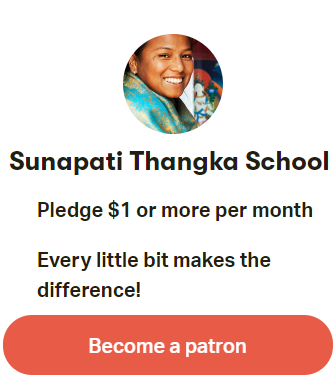
News from Nepal. Amanda posted: What? Twin Earthquakes!
From FrugalTravelsNepal
Yesterday, May 12, 2015 another major earthquake came, 7.3-4. There was another epicenter so I guess it means it’s a brand new earthquake. No more people died in our village, but 6 Americans died from an Osprey accident and 2 Nepali.On a side note, I was living in the town in Florida that had twin hurricanes in 2004. Who knew there were twin earthquakes.
We were home, Bimila, Mark, our new helpx volunteer, Sajana, my new helper and me. It hit hard, not like the wave I’d felt during the first one. And we panicked. We jumped up and went down the stairs while it shook the entire time. “Bimila,” I called out as we went down the stairs and she promptly joined us going down the stairs. Although I know we should not leave the building, we all promptly ran outside and to the hilltop. Bimila had been traumatized enough from the first earthquake while she clung to our tourist guest as she watched the devastation happening in Bhhaktapur.
As we reached the hilltop I turned to see our housecleaner, didi, coming out! She had been on the roof doing laundry. I gave her a big hug to try to ground her. I sat with her for a few minutes and then turned to look for Bimila. I jumped up and told our didi that I was going to look for her and as I got a ways up the hill I heard her call me. I thought she went to look for her father, Kamal, who was up near the temple doing some thangka painting.
I waited for her to come and even without a word we turned to find him and almost ran past the old buildings as we past. Bimila wouldn’t let go of me. We stopped along the way when we saw people we knew to ask. I knew Kamal is the kind of person who will stop to help his neighbor and that can be deadly at such times as this.
Sure enough, Kamal had stopped what he was working on when a tourist asked for directions to Nagarkot. He had been safely out of harm’s way when the earthquake struck. His random act of kindness hadn’t saved his life, but likely saved him from the initial trauma.
We spent the night at the hilltop. Fortunately, Mark had brought tarps, so we made a nice tent. He has been working so hard to help clear debris in the village so some shops could possibly open again.Tonight we will use Mark’s mosquito net, which will make it a lot better. The mosquitoes buzzed around all night except for when the wind picked up. I put coconut oil on my face to keep them away. They cannot take an oil base like that and will die if they land.
About the guest house: Star View held up quite well during the first couple quakes and aftershocks, but after this earthquake I noticed more paint on the floor and the cracks are growing. None of the baring walls seem to be compromised, but the wall I’m most concerned about is near the door. Sleeping in the room would be foolish, and upstairs might be even worse prior to getting a qualified inspector. I’ve been promised that ‘someone might come today.’
The electric has been cut to the guest house due to some of the homes on the grid have fallen. After the inspection we will get a generator, but if it’s not safe to stay here I plan to let my inner American come out and I’ll stay at a friend’s guest house that stayed intact in Nagarkot. Many of the guest houses in Nagarkot collapsed, but Hotel Mt. Paradise is only two story and almost as new as mine.
65 people are said to have died yesterday in this new earthquake.
Even with the earthquakes and craziness, I am so happy here and there is nowhere I’d rather be than in Nepal. I saw this bird this morning while having my coffee.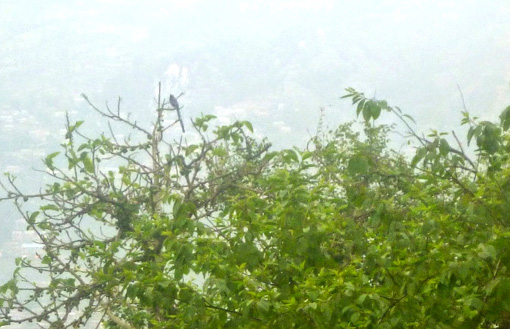
Posted by Amanda Summers at 9:30 PM
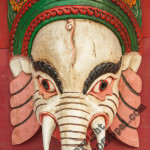 Ganesh Mask Design #02
Ganesh Mask Design #02 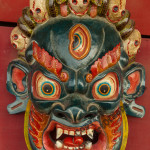 Wrathful Bhairava Mask
Wrathful Bhairava Mask 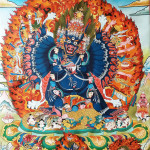 Vajrabhairava
Vajrabhairava 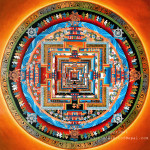 Kalachakra Mandala
Kalachakra Mandala  Samatha Meditation Thangka
Samatha Meditation Thangka 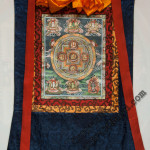 Silk Frame #02
Silk Frame #02 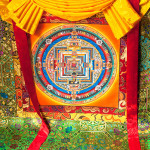 Modern Design Brocades
Modern Design Brocades 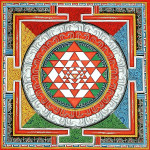 Sri Yantra Mandala
Sri Yantra Mandala 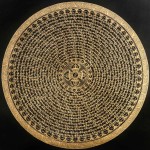 Yin Yang Mantra Mandala
Yin Yang Mantra Mandala 





